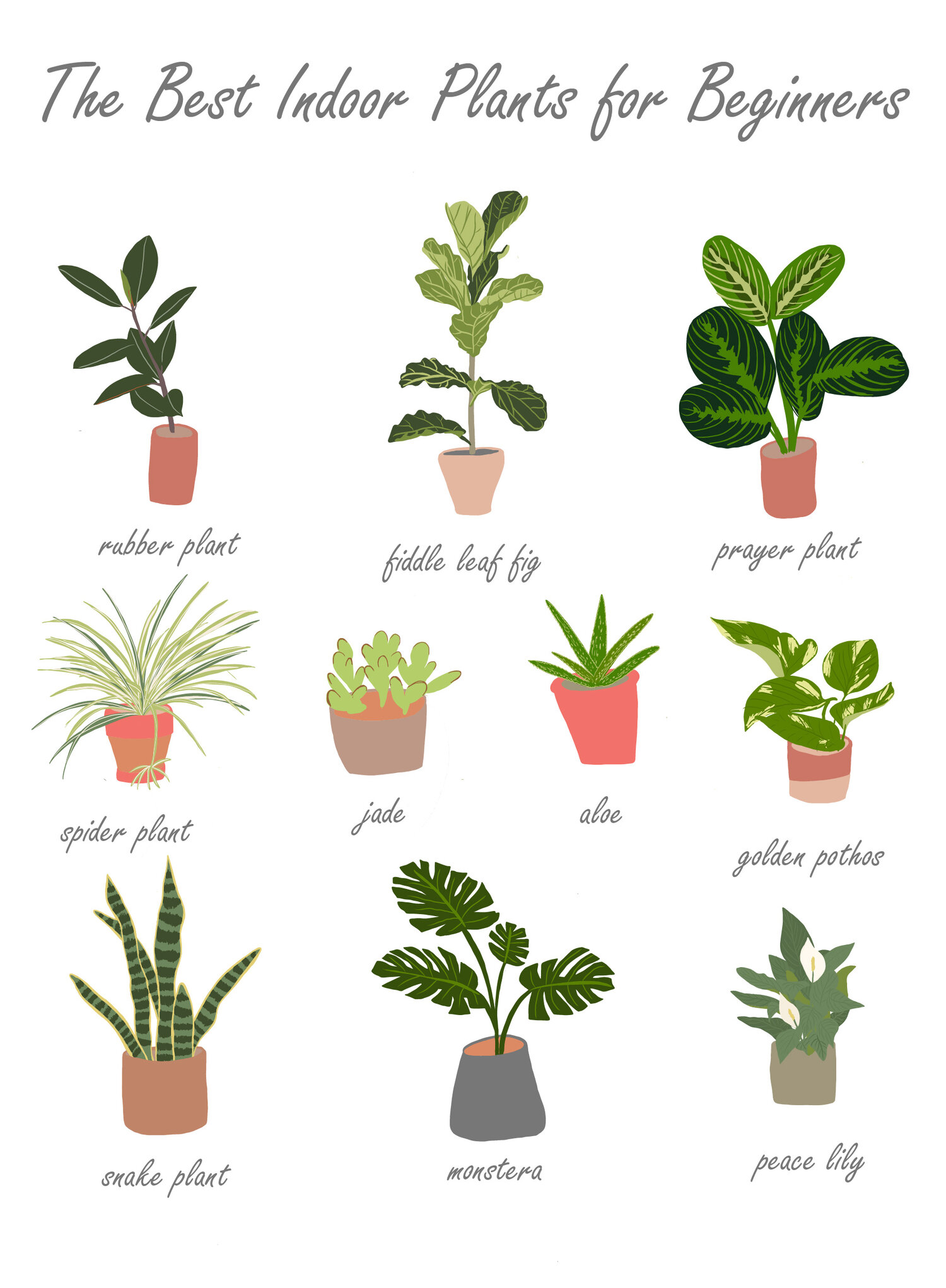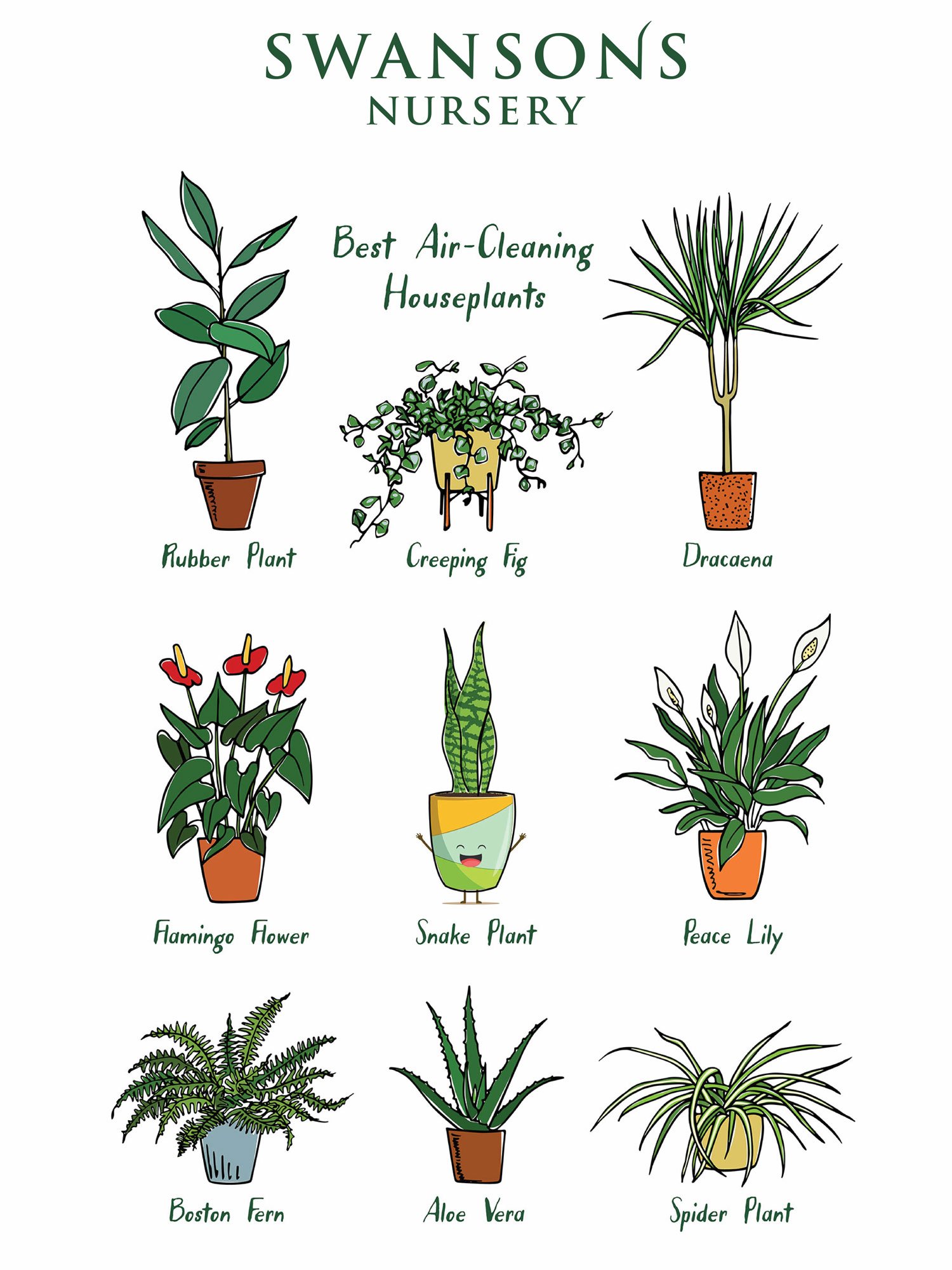Indoor plants are more than just decorative elements; they can significantly improve your home’s air quality, reduce stress, and boost your overall well-being. With a wide variety of plants available, choosing the right ones for your space can be overwhelming. To help you make informed decisions, we’ve curated a list of the best indoor plants, each with its unique charm and care requirements.
The Snake Plant is a popular choice for beginners due to its hardy nature and low-maintenance requirements. Its striking, sword-shaped leaves add a touch of elegance to any room.

Light: Thrives in low to bright, indirect light.
The Peace Lily is a beautiful flowering plant that adds a touch of serenity to your home. Its large, glossy leaves and elegant white blooms create a peaceful atmosphere.
Light: Prefers bright, indirect light but can tolerate low-light conditions.

The Rubber Plant is a classic indoor plant with large, glossy leaves that add a touch of tropical elegance to your home. It’s a relatively low-maintenance plant that can grow quite large.
Light: Thrives in bright, indirect light but can tolerate lower light conditions.
:max_bytes(150000):strip_icc()/houseplants-getty-0820-226e798aabf040edb584602e2c5dfd3b.jpg)
The Pothos is a versatile plant that can be grown in various ways, including trailing vines, hanging baskets, or climbing up a moss pole. Its heart-shaped leaves come in various colors, adding a splash of color to your home.
Light: Tolerates low to bright, indirect light.
The ZZ Plant is a nearly indestructible plant that can thrive in low-light conditions. Its glossy, dark green leaves add a touch of sophistication to any room.

Light: Tolerates low to bright, indirect light.
The Spider Plant is a popular choice for beginners due to its easy care and ability to produce baby spiderettes. Its long, slender leaves with white stripes add a touch of elegance to your home.
Light: Tolerates low to bright, indirect light.

The Monstera Deliciosa is a stunning plant with large, glossy leaves that develop characteristic splits as the plant matures. It’s a popular choice for modern homes and can grow quite large.
Light: Thrives in bright, indirect light.
The Chinese Money Plant is a unique and charming plant with round, coin-shaped leaves. It’s a popular choice for small spaces and can add a touch of whimsy to your home.
Light: Prefers bright, indirect light but can tolerate lower light conditions.
Philodendrons are a diverse group of plants with various leaf shapes and colors. They are relatively low-maintenance and can thrive in various light conditions.
Light: Tolerates low to bright, indirect light.
The Bird’s Nest Fern is a beautiful fern with long, fronds that create a nest-like shape. It adds a touch of elegance and natural beauty to your home.
Light: Prefers bright, indirect light but can tolerate lower light conditions.
Choose the right pot: Select a pot with drainage holes to prevent waterlogging.
By following these tips and choosing the right plants for your space, you can create a beautiful and healthy indoor environment.
Best Indoors Plant
